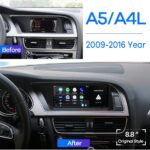Removing the Diesel Particulate Filter (DPF) can seem like a daunting task, but with the right tools and approach, it’s achievable for the home mechanic. This guide shares my personal experience with a DIY Diesel Dpf Removal, outlining the steps and observations made during the process.
For tackling the flange bolts, access was surprisingly straightforward. Utilizing two 9-inch extensions along with a knuckle joint allowed easy reach to even the bolt situated closest to the vehicle’s frame. When it came to lowering the DPF section, I employed a simple yet effective method. An egg crate, combined with a piece of firewood, provided support to the rear, heavier portion of the DPF. A gentle push from the front then allowed the front flange section to rest securely on the transmission support bracket. From there, lowering the rear section to the ground onto a piece of cardboard and pushing it back from the front was remarkably easy, requiring no strenuous weightlifting at any point.
Alt text: Close-up view showing the use of extensions and a knuckle joint to access and remove flange bolts during diesel DPF removal, highlighting the tools and the undercarriage of the vehicle.
To ensure future serviceability and prevent corrosion, dielectric grease was applied to all electrical plugs and sockets. This protective measure was taken to safeguard the pins and holes, anticipating a potential return to the original setup in the future.
The DPF injector presented a unique challenge in terms of protection post-removal. Currently, it’s temporarily secured to the top of the rail with zip ties. A more permanent solution is being considered, possibly involving creating a Plasti-dip mold to effectively cover the face of the injector. This would prevent debris from entering the orifice or mounting space, ensuring its longevity and functionality should it be needed again.
Alt text: Image illustrating the temporary protection of the diesel particulate filter injector using zip ties, showcasing its position and the surrounding engine components after DPF removal.
Reinstallation proved to be a quick process. The addition of a black tip to the 5-inch FloPro exhaust system not only completed the installation but also enhanced the vehicle’s appearance. The visual upgrade was a satisfying conclusion to the physical modifications.
However, a significant increase in air noise emanating from the tailpipe was immediately noticeable post-DPF removal. The volume of the noise is substantial, and its cause remains unclear. Further investigation is needed to diagnose and address this unexpected side effect of the DPF removal.
Following the modification, a Check Engine Light (CEL) illuminated, specifically related to the EGR system. Despite the CEL, there was no discernible reduction in vehicle power. The error code was cleared, and monitoring continues to determine if the EGR-related CEL will reappear. This is a crucial aspect to observe to ensure the DPF removal hasn’t negatively impacted other engine management systems.
Alt text: A detailed view of the black exhaust tip installed on the FloPro system after diesel particulate filter removal, emphasizing the aesthetic enhancement and the modified exhaust setup.
While the entire diesel DPF removal and reinstallation process was not a quick two-note tune, it was completed in a reasonable timeframe. Without utilizing air tools, the entire operation, from start to finish, took approximately 5 hours. Employing air tools would likely reduce the time, but perhaps not significantly. This timeframe provides a realistic expectation for others considering a similar DIY diesel DPF removal project.
In conclusion, this personal experience outlines a successful DIY diesel DPF removal. While some post-removal issues like exhaust noise and EGR CEL require further attention, the core task is achievable with careful planning and execution. This guide aims to offer insights and practical steps for those considering diesel particulate filter removal on their own vehicles.
